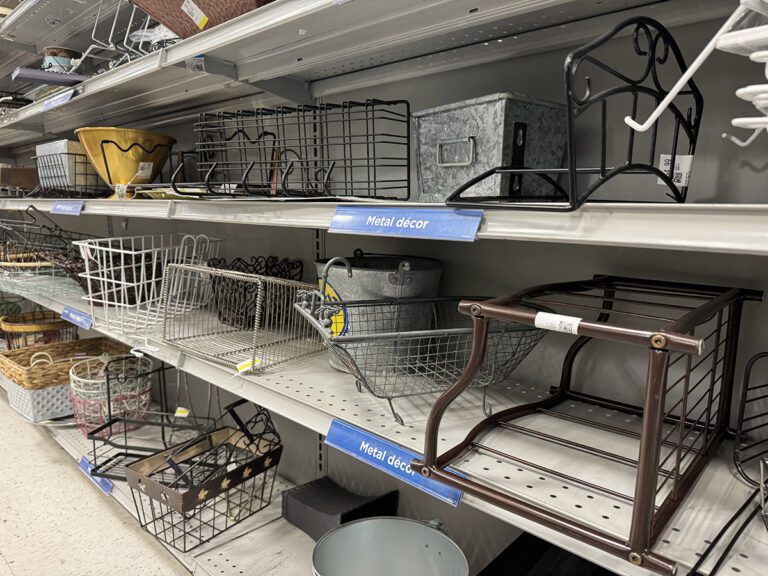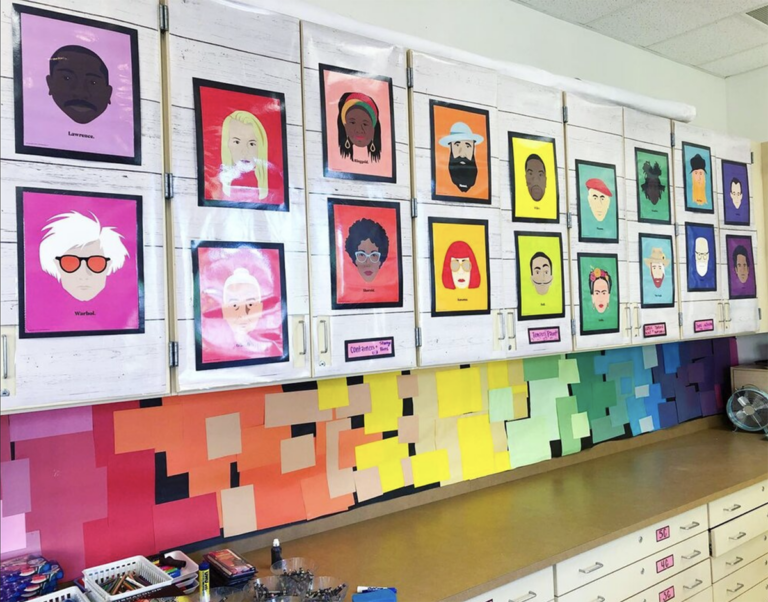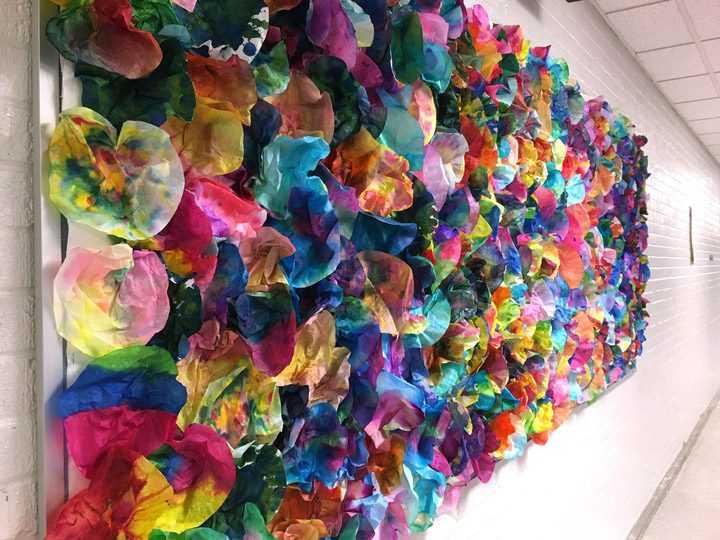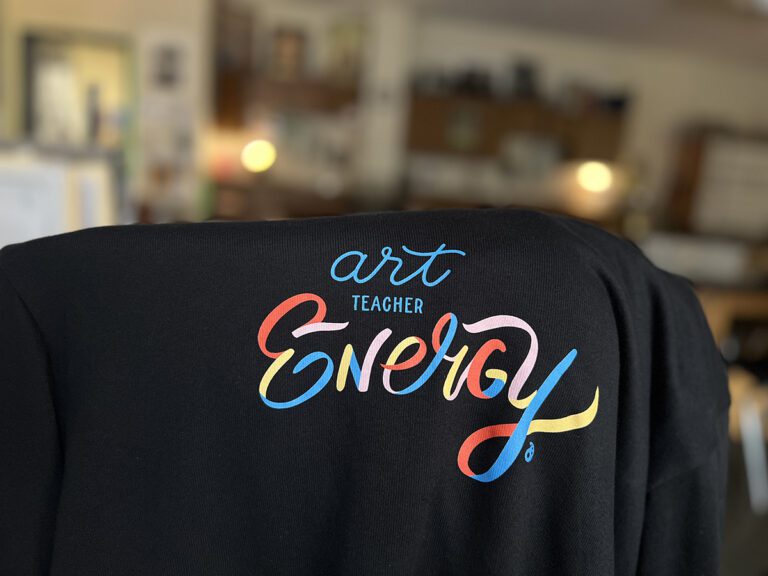Many of us use artmaking practices as a vehicle for teaching social activism. But, how we teach kids in the art room can be just as important as what we teach kids in the art room. This is especially true when it comes to modeling environmentally conscious behaviors. Most of us use a scrap box for basic recycling, but what else can be done to make our programs more “green”?
Here are some easy ways to reduce, reuse, and recycle in your art room.
Reduce
The easiest way to “go green” in your art classroom is to reduce what you use in the first place. With dozens of classes and hundreds of kids, even small efforts to reduce will add up to big differences over time.
Here are 6 ideas:
- Use ShamWows.
When I reflect on my classroom waste, paper towels are at the top of the list. No matter what, we seem to go through them at an astounding rate. To reduce my paper towel usage, I try using ShamWows instead. These super absorbent cloths are a student favorite because they quickly and effectively eliminate liquid messes. A bonus is that some students have seen the infomercials and find them to be an exciting novelty. If you can’t find ShamWows, any shammy towel will do. Even a 100% cotton cloth will do the trick! - Reduce your paper with class sets of copies.
Creating hundreds of handouts can be very wasteful from an ecological standpoint. Instead, try making a single class set of handouts for students to use over and over. Ask your students to “save a tree” by not marking on the paper. Later, it can be reused with the next group. Consider sliding these handouts into plastic sheet protectors to prolong their use. If you are well organized, you can even use these papers year after year! - Dim the lights to draw.
We’ve all experienced afternoon classroom management challenges when the group energy isn’t ideal. Often, dimming the lights has a calming effect. Why not use this as a “green” strategy too? Turn off a few lights strategically, to create some drawing ambiance. If you are lucky enough to have a classroom with windows, use the natural light to reduce the amount of electricity you are using.
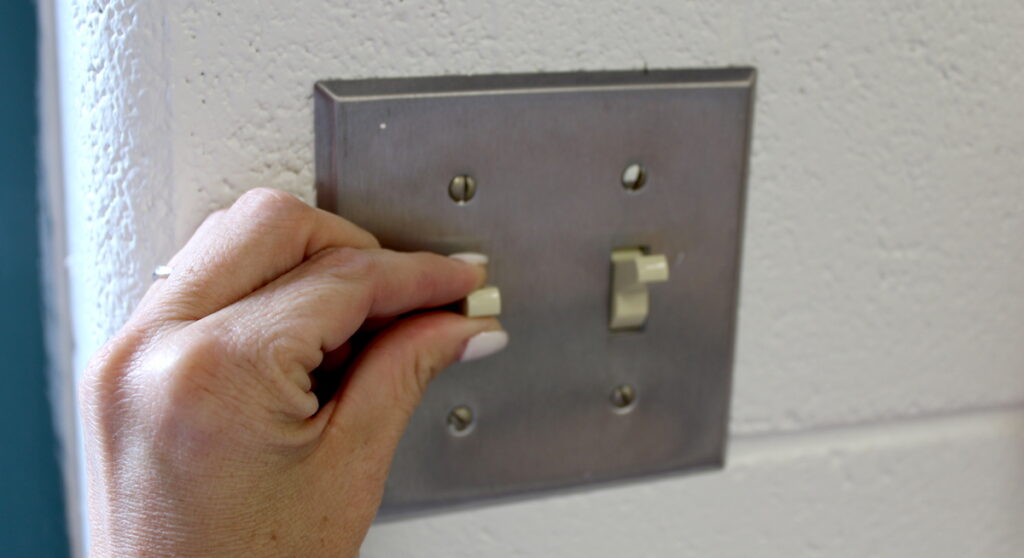
- Change the materials you purchase.
Keeping up with supply orders can be tricky, but consider spending a few extra minutes researching new eco-friendly materials. For example, Pilot is now selling re-fillable dry erase markers, and Crayola has a company plan for reducing their environmental impact. Consider these factors as you make your order. - Go digital to reduce paper.
Paper is an essential artmaking tool, but it’s no longer crucial for other forms of communication. If you aren’t already doing it, consider transitioning your newsletter and notes home into a digital format. - Power off and unplug for the weekend.
Surprisingly, many electronic devices use a small amount of electricity, even when turned off. Talk to your district’s technology team about saving energy in your room by unplugging computers, pencil sharpeners, and other devices over the weekend. Some systems perform necessary updates over the weekend, so be sure to check first!
Reuse
Art supplies can be expensive, so combat rising program costs by exploring unique opportunities for reuse within your school.
Here are 3 ideas:
- Use copy room cast-offs for sketching.
Scrap paper is always in high demand as our students plan projects with thumbnails and sketches. Instead of using a fresh piece for each new drawing, consider using the “cast-offs” from your school’s copy room. Reusing the back side of copies is an ideal strategy for reusing the whole school’s supply of used paper. Just be careful you don’t include any sensitive information that may have come through the copier like 504 plans, IEPs, or grade reports. - Do something with all those old crayons!
Crayons do not biodegrade well in landfills, so give your crayons a second life by reusing them. After removing the wrappers, wax crayons can be melted and formed into new shapes to serve a new role in the art room. Realistically, many art teachers won’t have time for all of the tasks involved in this process, so why not ask your students to help? Allow students to take ownership of the project by peeling labels and sorting for you!
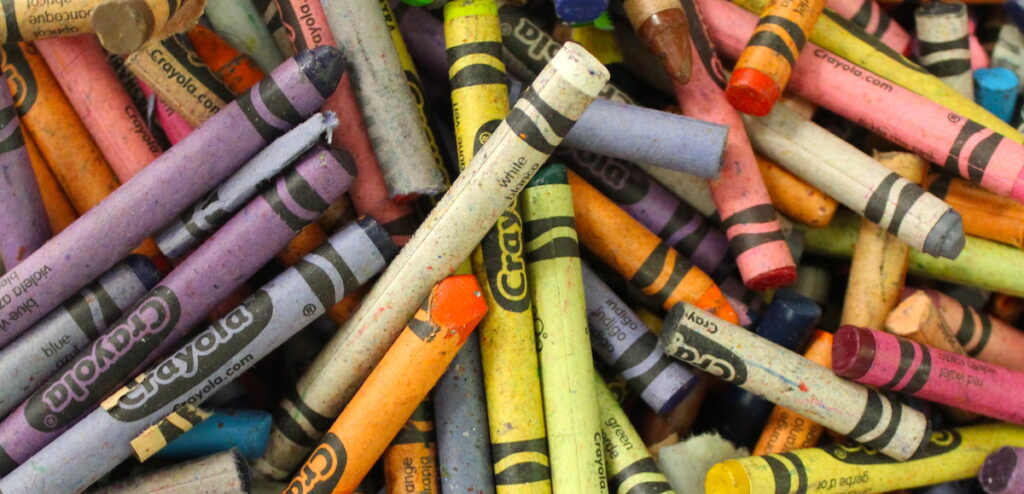
- Use recycled materials as art supplies.
Demonstrate how re-use can be beautiful by making use of recycled materials as art supplies. Check out these great articles about projects that use recyclables:
- Two Stunning Projects Made Entirely from Recycled Materials
- How Do You Use Recycled Magazines in the Art Room?
- 5 Reasons Cardboard Should Be an Essential Art Room Material
Recycle
When an art supply has finally out lived its usefulness, investigate ways to recycle it safely.
Here are 3 common art materials and how to recycle them.
- Paper
The most obvious way to encourage recycling in the art room is to make sure you have a recycling bin! Decorate your bin, so it stands out from its deceptive look alike, the trash can.
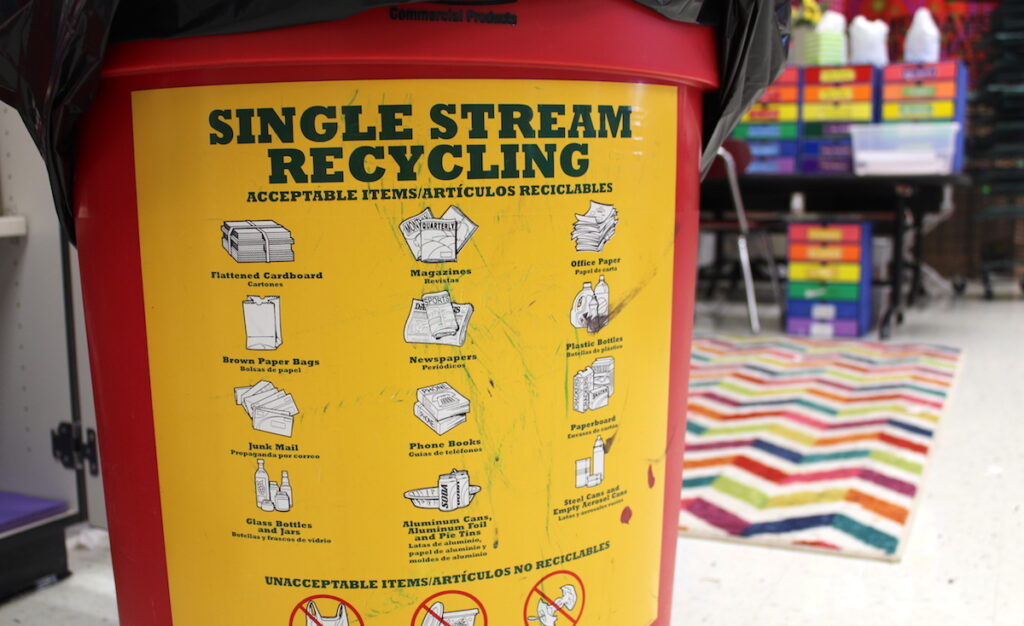
- Markers
If you aren’t familiar with Crayola’s marker recycling program, it is one of the easiest ways to recycle used school supplies. Start by visiting their website to sign up. The process takes less than three minutes. Throughout the year, collect all your “dead” markers. Surprisingly, they don’t even have to be Crayola. (Dry erase markers and highlighters are also accepted.) When you are finished collecting, log back onto the site and estimate the number of markers you will be sending. Then, print the provided label and mail your recycled donations back. The shipping and handling are paid for by Crayola. It could not be easier!

- Crayons
Crayon recylcing is a little tougher than markers. While many organizations help recycle crayons, I have yet to find one that pays for shipping…and crayons are heavy! So, if you decide to take on the challenge, you will have to get creative to fin a donor who will spring for shipping. Or, make it a project-based learning endeavor and challenge your students to solve the problem themselves!
With these tips, hopefully, you can have a small impact on your art program’s ecological footprint, and help foster lifelong interest in environmental responsibility in your art students.
What tips do you have for reducing, reusing, and recycling in the art room?
What are your favorite projects or techniques that use recycled materials?
Magazine articles and podcasts are opinions of professional education contributors and do not necessarily represent the position of the Art of Education University (AOEU) or its academic offerings. Contributors use terms in the way they are most often talked about in the scope of their educational experiences.


